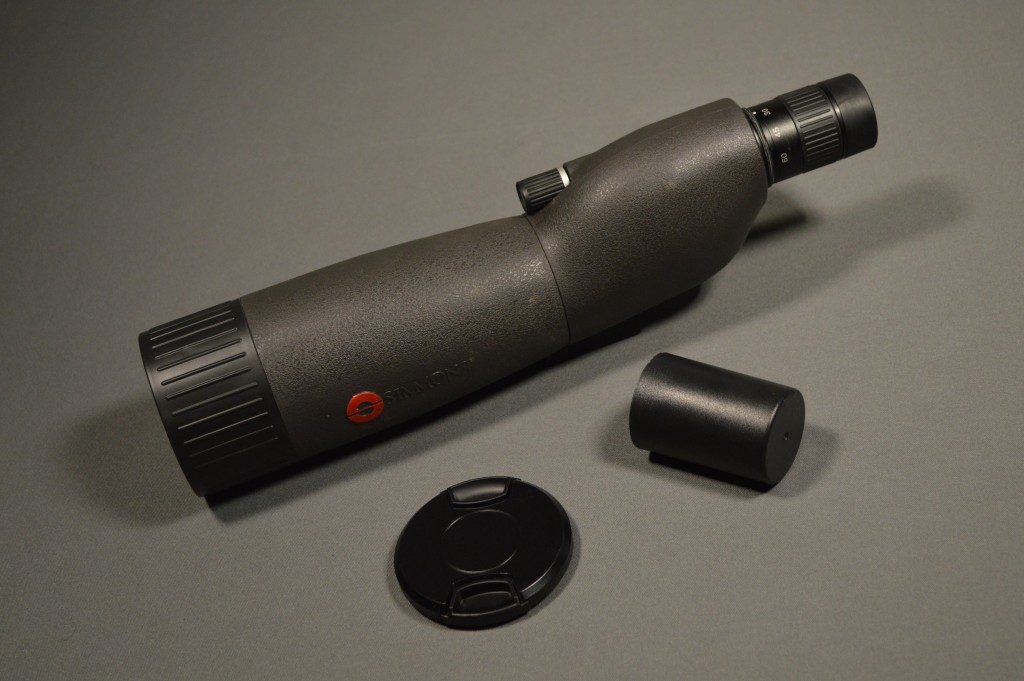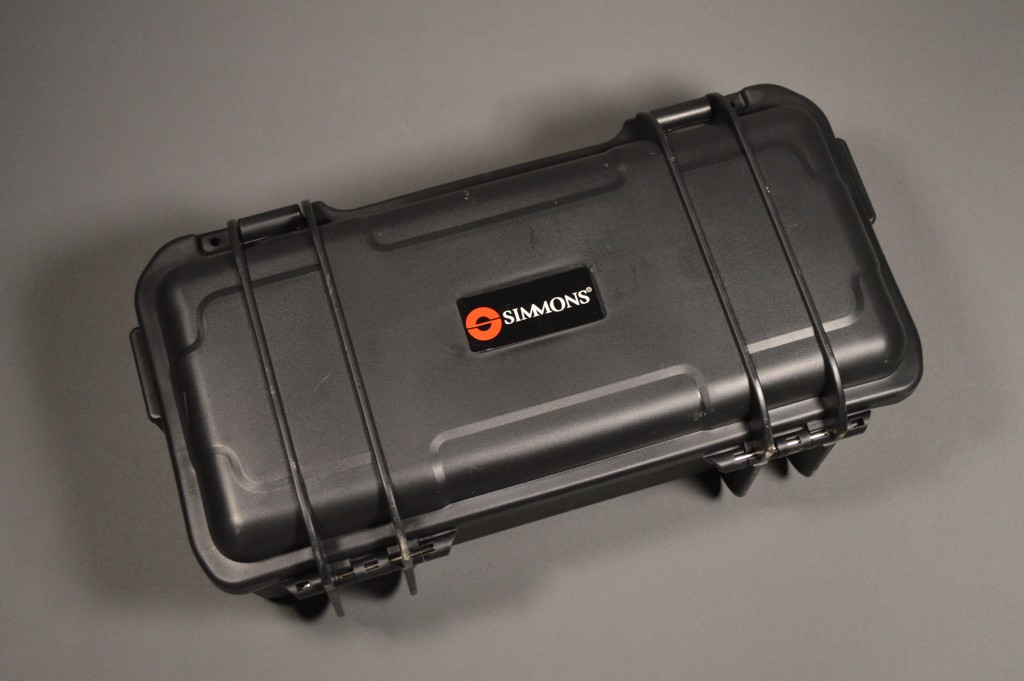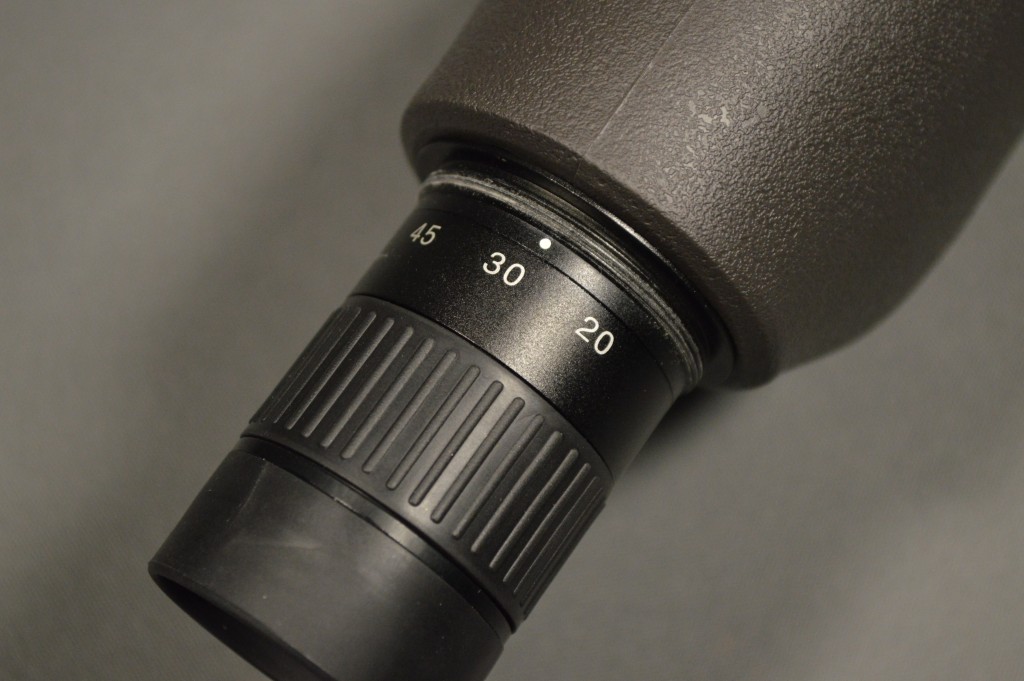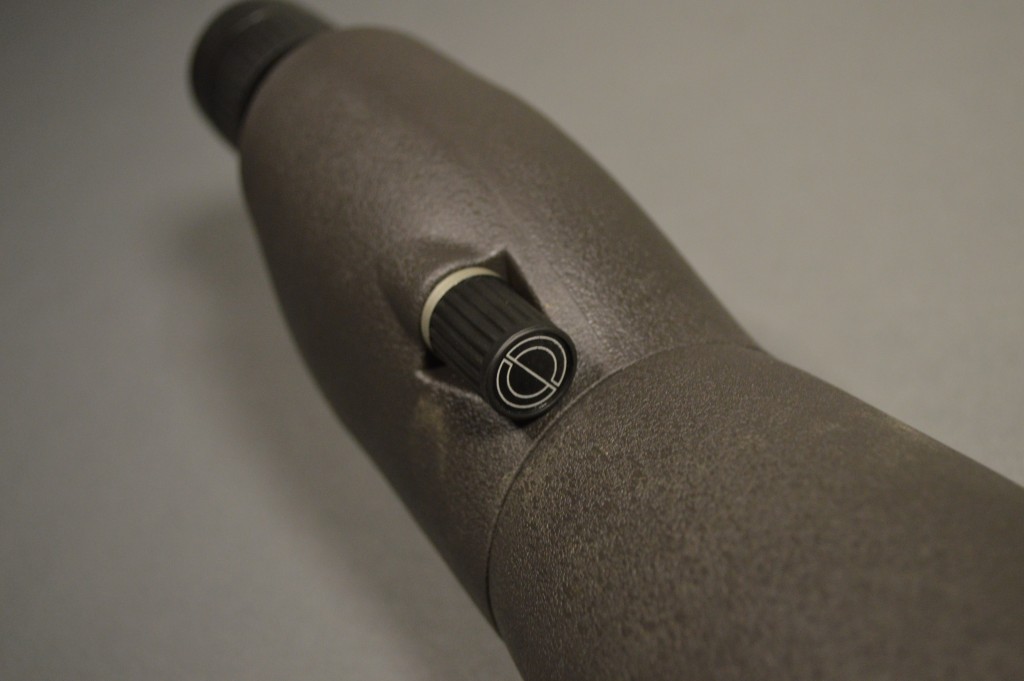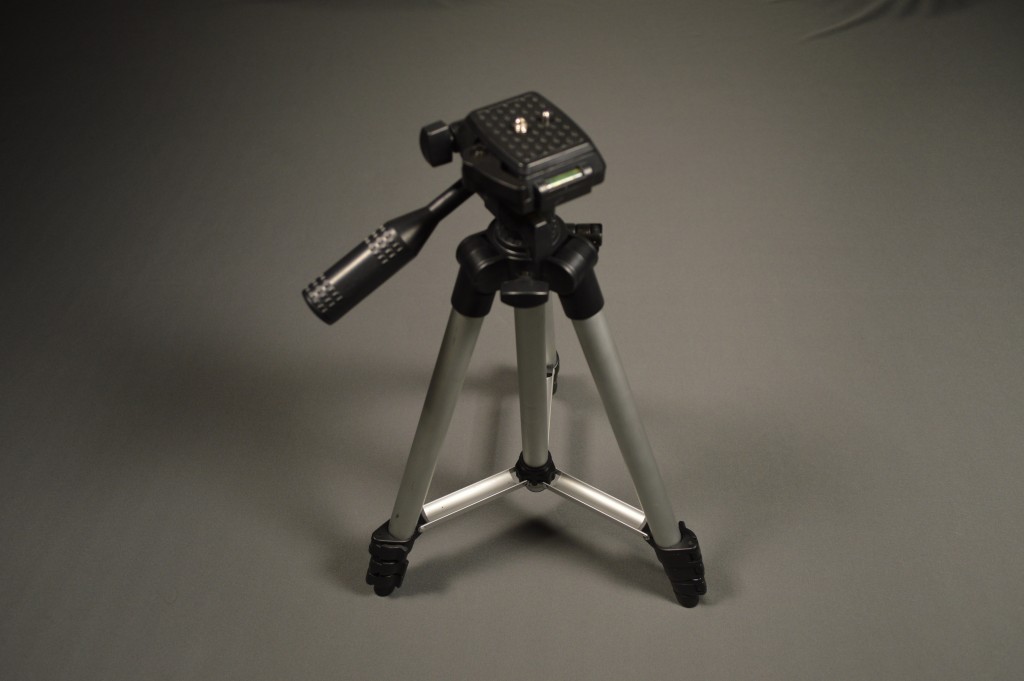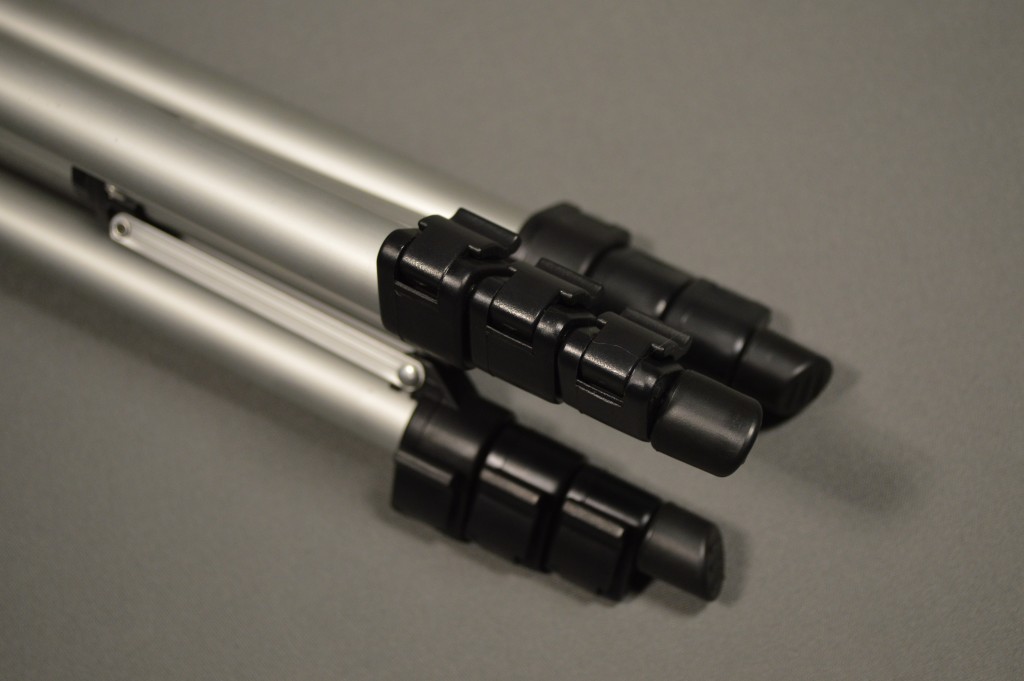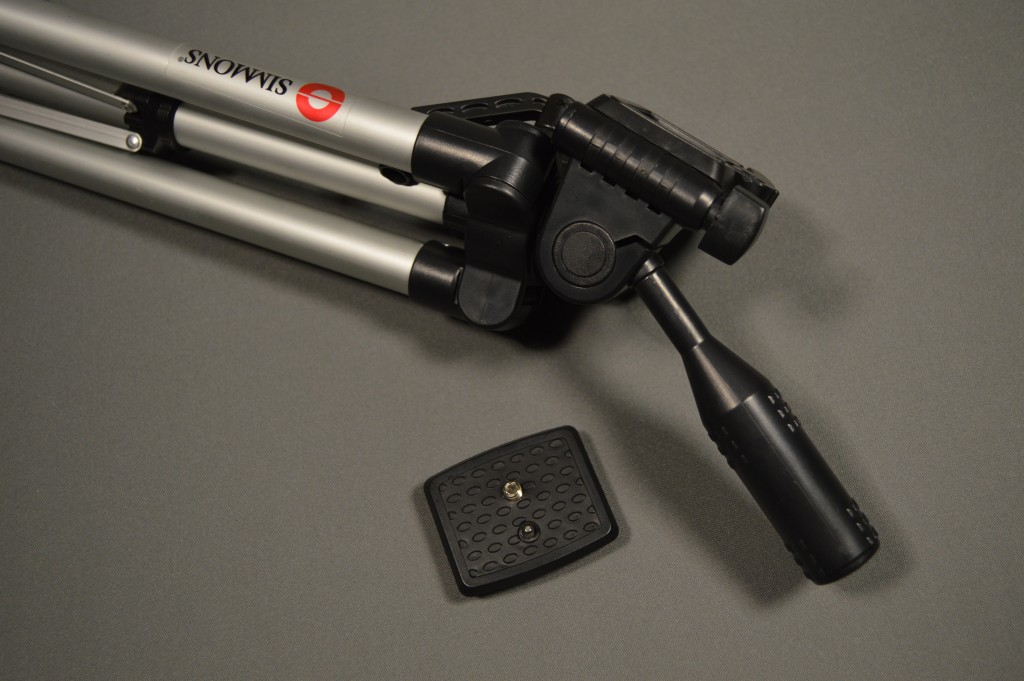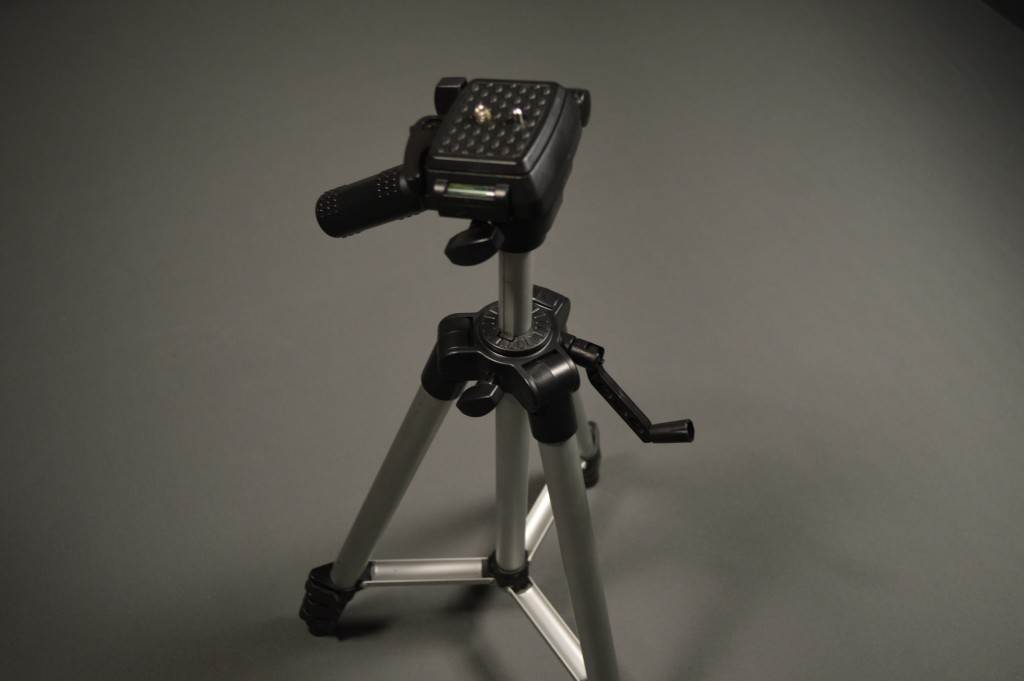Simmons 20-60x60mm Spotting Scope Review
One of the earliest skills that most rifle shooters look to develop is the ability to quickly and accurately adjust a rifle’s sights to ensure that the gun’s point of aim and each bullet’s point of impact are as close as possible. As fundamental as this skill is, it can be quite difficult, especially in the absence of proper tools. Bullet holes are tiny by their very nature, and seeing them from 100 yards away or more is simply beyond the capabilities of the human eye.
For the first six years of my shooting journey, I made do without a spotting scope. My old private range was usually quiet enough that I could walk downrange and check my groups without issue. In more recent times, I’ve looked to ballistics charts to allow me to find rough zeroes at shorter ranges. While both of these techniques have worked reasonably well, slight inaccuracies at shorter ranges are far more significant at longer ones, and a zero that seems perfect at 25 yards is often less so at 100.
One of the main reasons for my reluctance to grab a proper spotting scope was the high price of most quality units. Often fetching several hundred dollars, I simply could not convince myself to spring for a high-end one, and many shooters are highly critical of budget optics. I’ve also had mixed experiences with cheap scopes, and I was not sure I wanted to drop $100 or more to try a budget spotter.
With this background in mind, it should be no surprise that I was very excited to receive a Simmons 20-60×60 spotting scope this past Christmas. After spending a little over a month with the scope, its usefulness has impressed me, but the experience has not been perfect. Today, we will examine this budget, offering a little more closely.
Optics
As is typical with most spotting scopes, the Simmons unit offers some pretty ridiculous magnification settings. Adjustable from 20x all the way up to a whopping 60x, the scope theoretically offers plenty of power to spot tiny bullet holes downrange. In reality however, these numbers can be a bit deceiving.
Most people probably look at a product like this and expect to set it at 60x and leave it there. After all, holes on paper are easier to spot at 60x than they are at 20x, right? In truth, eye relief drops to almost zero, and image clarity/brightness becomes seriously problematic once you get up beyond 30x. This is typical for budget optics, and the fact that the picture is bright and clear with minimal edge distortion up to around 30x is frankly remarkable. Prospective buyers simply need to keep in mind that the top end of this scope’s power range is probably a little deceiving in practicality.
So how do the magnification limitations affect the scope’s usefulness at the range? In my experience, 30x is plenty of power out to around 150 yards. Even at the 20x setting, I had no problem spotting .223 holes at 100 and 150 yards. If you’re someone like me who needs a spotting scope to find zero at 100 yards, the Simmons will absolutely work.
Controls
The scope’s magnification can be adjusted by turning the rear eye piece between the marked power levels. I’ve owned several variable-power rifle optics, but I was surprised by the amount of force required to turn the spotting scope’s eye piece. I expect most people will find a magnification setting that works best for them and then leave the scope alone, but I do want to highlight the fact that adjusting the zoom level will likely necessitate target reacquisition.
Tripod
The scope’s mostly aluminum and plastic tripod leaves quite a lot to be desired. Because it is so light, the unit lacks the sort of stability that is necessary at 20-plus magnification. I’ve noticed that on windy days, the scope becomes especially challenging to settle on this lightweight base. The choice to use aluminum for this accessory makes sense, but Simmons should have weighted it to make the tripod less likely to shift when making adjustments to the scope.
A second issue I’ve encountered relates to the tripod’s height. While the tripod features extendable legs, even the lowest setting sets the scope too high to be comfortably used from a seated position. Checking my target requires standing up and then trying to find the appropriate eye relief to see an image in the optic. A slightly lower tripod may not only be more stable, but it would make it easier to use the scope while seated at a bench.
Fine adjustments to the scope’s positioning can also be somewhat challenging, particularly when it comes to the left-right shift. If you’ve almost centered your target, but it’s just a little too far left in the lens, expect it to be just a little too far right after adjusting. All directional controls on the base can be loosened and tightened as needed, but the plastic parts exhibit enough “stickiness” and flex that precise adjustments are difficult. Usually, any time I need to make lateral changes, I simply rotate the whole tripod.
A bright spot on the tripod is the fantastic elevation lever that folds out from the midsection of the stand. This piece facilitates fine up-down tweaks that are critical to centering a target in the scope. It may seem minor, but a feature like this almost totally redeems the otherwise unremarkable tripod.
Conclusion
As far as optics go, the Simmons 20-60×60 spotting scope is certainly at the lower end of the food chain. Its mediocre glass limits usable magnification to around 30x as eye relief and brightness challenges make it difficult to see bullet holes at higher power levels. The included tripod is useful as something to set the scope on, but its lack precision and dubious stability both make spotting somewhat challenging at times.
Even with my complaints, Simmons’ scope still should work well for many shooters. As someone who uses it primarily to help me adjust rifle sights, I’ve found that it really serves its purpose very well. Typically, once I get a rifle properly sighted, I move on to shooting steel and other reactive targets. I also rarely shoot paper at distances beyond 100 yards, so dropping major coin on a high end optic really is not necessary For people like me, this spotting scope is more than adequate.
An information security professional by day and gun blogger by night, Nathan started his firearms journey at 16 years old as a collector of C&R rifles. These days, you’re likely to find him shooting something a bit more modern – and usually equipped with a suppressor – but his passion for firearms with military heritage has never waned. Over the last five years, Nathan has written about a variety of firearms topics, including Second Amendment politics and gun and gear reviews. When he isn’t shooting or writing, Nathan nerds out over computers, 3D printing, and Star Wars.

